Soviet cumulative anti-tank ammunition during the war
The cumulative effect of a directional explosion became known as early as the 19 century, shortly after the start of mass production of high explosives. His first scientific paper on this issue was published in 1915 in the UK.
This effect is achieved by giving a special form to the charges of explosives. Usually for this purpose, the charges are manufactured with a notch in the part opposite to its detonator. When an explosion is initiated, a convergent detonation product stream is formed into a high-speed cumulative jet, and the cumulative effect increases when the recess is lined with a layer of metal (1-2 mm thick). The speed of the metal jet reaches 10 km / s. Compared with the expanding detonation products of conventional charges in a converging stream of cumulative charge products, the pressure and densities of matter and energy are much higher, which provides a directional explosion effect and a high penetrating power of the cumulative jet.
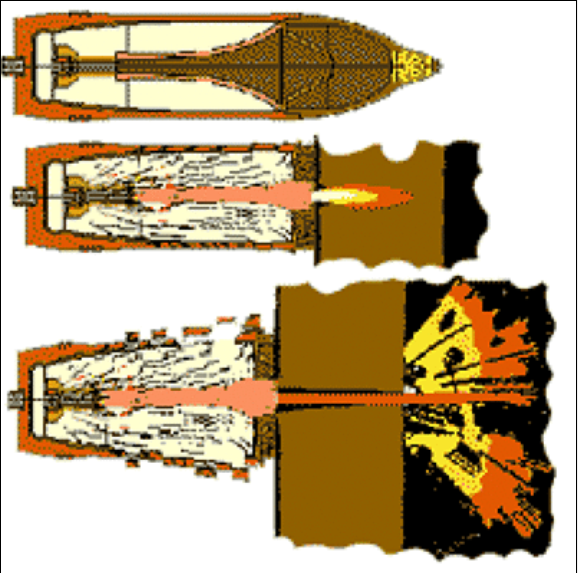
When the conical shell collapses, the speeds of individual parts of the jet turn out to be slightly different, as a result the jet in flight stretches. Therefore, a small increase in the gap between the charge and the target increases the penetration depth due to elongation of the jet. The thickness of the armor pierced by cumulative projectiles does not depend on the firing range and is approximately equal to their caliber. At considerable distances between the charge and the target, the jet is torn apart, and the effect of penetration is reduced.
In the 30s of the XX century there was a massive saturation of troops tanks and armored vehicles. In addition to the traditional means of combating them, in the pre-war era in some countries, the development of cumulative shells was carried out.
Particularly tempting was the fact that the armor penetration rate of such ammunition did not depend on the speed of the encounter with the armor. This made it possible to successfully use them to destroy tanks in artillery systems originally not intended for this, and also to create highly effective anti-tank mines and grenades. Germany advanced most of all in creating cumulative anti-tank ammunition; at the time of the attack on the USSR, cumulative 75-105-mm caliber artillery shells were created and put into service.
Unfortunately, in the Soviet Union before the war, this direction was not given due attention. In our country, the improvement of anti-tank weapons went by increasing the caliber of anti-tank guns and increasing the initial speeds of armor-piercing shells. In fairness it should be said that in the USSR at the end of the 30-x an experimental batch of 76-mm cumulative projectiles was fired and tested. During the tests, it turned out that the cumulative shells, equipped with standard fuses from fragmentation shells, as a rule, do not pierce armor and give ricochets. Obviously, the case was in the fuses, but the military, who already did not show much interest in such projectiles, finally abandoned them after unsuccessful firing.
At the same time, a significant number of Kurchevsky’s recoil-free (dynamo-reactive) cannons were manufactured in the USSR.
The advantage of such systems is a small weight and lower cost compared to the "classical" tools. Recoilless in combination with cumulative projectiles quite successfully could prove to be as anti-tank weapons.
With the outbreak of hostilities from the fronts, reports began to come in that German artillery was using previously unknown so-called “armor-piercing” shells that effectively hit tanks. When inspecting wrecked tanks, attention was paid to the characteristic appearance of holes with melted edges. At first, the version was expressed that in the unknown projectiles a “quick-burning termite” accelerated by powder gases is used. However, experimentally, this assumption was soon refuted. It was found that the combustion processes of thermite incendiary compositions and the interaction of the slag jet with the metal of the tank's armor proceed too slowly and cannot be realized in a very short time when the shell penetrates the armor. At this time, samples of armored armored shells captured from the Germans were delivered from the front. It turned out that their design is based on the use of the cumulative effect of the explosion.
At the beginning of 1942, designers M.Ya. Vasiliev, Z.V. Vladimirova and N.S. Zhitkikh designed a 76-mm shaped-charge projectile with a conical shaped-shaped recess lined with a steel shell. The shell of an artillery shell with bottom equipment was used, the camera of which was additionally bored into a cone in its head part. A powerful explosive was used in the projectile - an alloy of TNT with RDX. The bottom hole and plug served to install an additional detonator and a beam detonator capsule. The big problem was the lack of a suitable fuse in the production. After a series of experiments was selected aviation instant fuse AM-6.
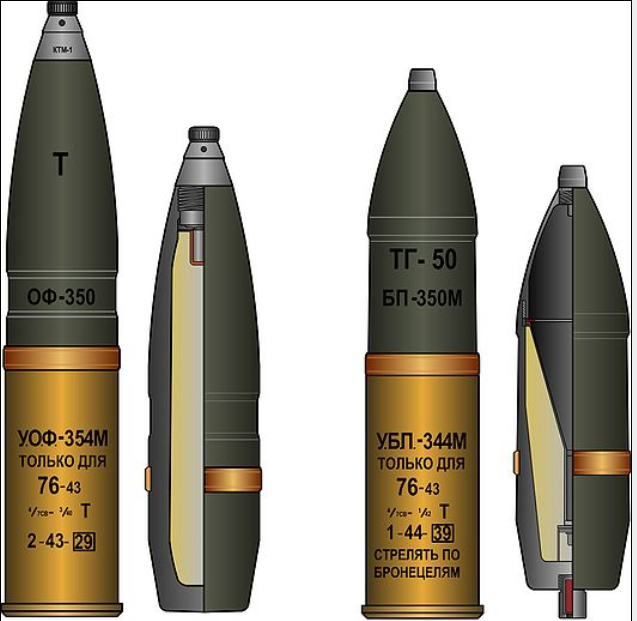
Cumulative shells that had armor penetration of the order of 70 — 75 mm, appeared in the ammunition set of regimental guns from 1943, and were mass-produced throughout the war.
The industry has delivered to the front about 1,1 million 76-mm cumulative anti-tank missiles. Unfortunately, using them in tank and divisional 76-mm guns was prohibited due to the unreliable operation of the fuse and the danger of an explosion in the barrel. Fuses for cumulative artillery shells that meet the safety requirements for firing long-barreled guns were created only at the end of the 1944 year.
In 1942, a group of designers consisting of I.P. Dziuba, N.P. Kazekina, I.P. Kucherenko, V.Ya. Matyushkina and A.A. Greenberg developed cumulative anti-tank missiles for 122-mm howitzers.
The 122-mm cumulative projectile for the 1938 sample howitzer had a body made of steel cast iron, equipped with an effective hexogen-based explosive composition and a powerful heating element detonator. The 122-mm cumulative projectile was completed with a B-229 instantaneous fuse, which was developed in a very short time at the CDB-22, led by A.Ya. Karpov.
The shell was put into service, launched into mass production at the beginning of 1943, and managed to take part in the Battle of Kursk. Until the end of the war, more than 100 thousand 122-mm cumulative shells were produced. The projectile pierced the armor with a thickness up to 150 mm along the normal, ensuring the defeat of heavy German tanks "Tiger" and "Panther". However, the effective range of howitzers of maneuvering tanks was suicidal - 400 meters.
The creation of cumulative shells opened up great opportunities for the use of artillery shells with relatively small initial speeds — the 76-mm regimental guns of the 1927 and 1943 samples. and 122-mm howitzers of the 1938 model, which were in large quantities in the army. The presence of cumulative projectiles in the ammunition of these guns significantly increased the effectiveness of their anti-tank fire. This greatly strengthened the anti-tank defense of the Soviet infantry divisions.
One of the main objectives of the armored attack aircraft Il-1941 adopted at the beginning of 2 of the year was the fight against armored vehicles.
However, the cannon armament in service with the attack aircraft made it possible to effectively strike only lightly armored vehicles.
Reactive 82-132-mm projectiles did not have the required accuracy of fire. However, cumulative RBSK-2 were developed to arm the IL-1942 in 82 year.
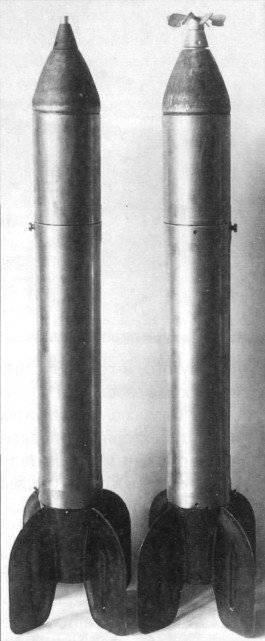
The head part of the RBSK-82 missile consisted of a steel cylinder with a wall thickness of 8 mm. A sheet iron cone rolled into the front of the cylinder, creating a recess in the explosive that was poured into the cylinder of the projectile head. A tube passed through the center of the cylinder, which “served to transmit a beam of fire from the schooling capsule to the TAT-1 blasting cap”. The shells were tested in two types of equipment for explosives: TNT and alloy 70 / 30 (TNT with RDX). The shells with TNT had a point for the AM-A fuse, and the shells with the 70 / 30 alloy - the M-50 fuse. The fuses had a cap of the school action type APUV. The missile part of RBSK-82 is standard, from M-8 missiles equipped with pyroxylin powder.
In total, 40 pieces of RBSK-82 were spent during the tests, of which 18 was fired in the air, the rest on the ground. The captured German tanks Pz. III, StuG III and the Czech tank Pz.38 (t) with enhanced armor. Shooting in the air was carried out on a StuG III tank with a dive at an angle of 30 ° with a salvo of 2-4 projectile in one go. 200 m. Shooting range. The shells showed good stability on the flight path, but failed to get a single drop in the tank.
The cumulative action armor-piercing projectile RBSK-82, equipped with 70 / 30 alloy, pierced the armor 30 mm thick at any meeting angles, and the 50 mm armor punched at a right angle, but does not pierce the 30 ° angle at the meeting angle. Apparently, low armor penetration is a consequence of the delay in the triggering of the fuse “from the rebound and the cumulative jet is formed when the deformed cone.”
The RBKS-82 shells in TNT pierced armor 30 mm thick only at meeting angles of at least 30 °, and 50 mm armor was not pierced under any hit conditions. The holes obtained through the penetration of armor had a diameter up to 35 mm. In most cases, the penetration of armor was accompanied by a metal spall around the outlet.
Cumulative PCs were not accepted for service due to the lack of a clear advantage over standard rocket projectiles. On the approach was already a new, much stronger weapon - PTAB.
The priority in the development of small cumulative aerial bombs belongs to domestic scientists and designers. In the middle of 1942, the well-known developer of fuses, I.A. Larionov, proposed the design of a light anti-tank bombs cumulative action. The Air Force Command has shown interest in the implementation of the proposal. TsKB-22 quickly carried out design work and tests of the new bomb began at the end of 1942. The final version was PTAB-2,5-1,5, i.e. anti-tank aerial bomb of cumulative action of mass 1,5 kg in the dimensions of 2,5-kg aviation fragmentation bomb. The State short-term bonds quickly decided to adopt PTAB-2,5-1,5 and organize its mass production.
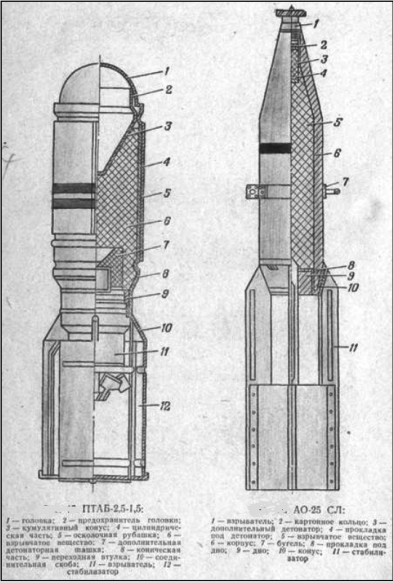
The first PTAB-2,5-1,5 cases and riveted cylindrical-shaped stabilizers were made of sheet steel 0,6 mm thick. To increase the fragmentation effect, the cylindrical part of the bomb was additionally put on a steel 1,5-mm jacket. The combat charge of PTAB consisted of a mixed BB type TGA, equipped with a bottom point. To protect the impeller of the AD-A fuse from spontaneous collapse, a bomb was put on a stabilizer made from a square-shaped tin plate with a plug of two wire whiskers attached between the blades fixed on it. After dropping a PTAB from an airplane, it was blown off a bomb by an oncoming airflow.
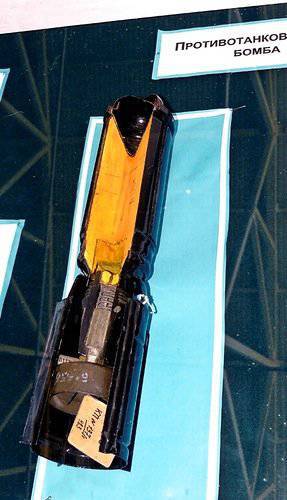
When hitting the tank's armor, the fuse triggered, which through the tetrile detonator bomb caused the detonation of the explosive charge. During charge detonation, due to the presence of a cumulative funnel and a metal cone in it, a cumulative jet was created, which, as field tests showed, pierced armor up to 60 mm thick at an 30 ° meeting angle followed by a destructive action behind the armor: defeating the tank crew, initiating detonation of ammunition , and also ignition of fuel or its vapors.
The bomb charging of the IL-2 included up to 192 PTAB-2,5-1,5 aerial bombs in 4-x small bombs cassettes (48 pieces each) or up to 220 pieces when they were rationally placed in bulk in 4-x bomb racks.
Adoption of the PTAB for some time kept secret, their use without the permission of the High Command was prohibited. This made it possible to use the effect of surprise and effectively use new weapons in the Battle of Kursk.
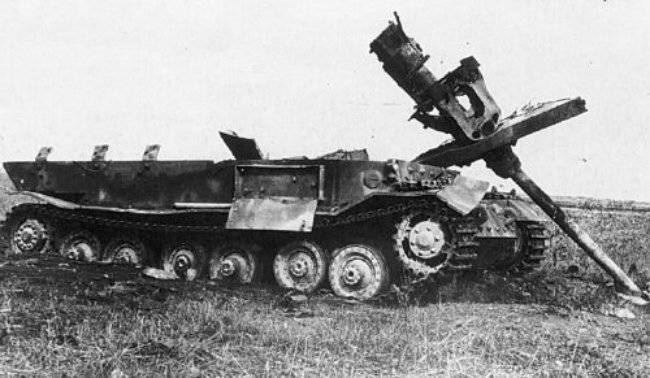
The massive use of PTAB had a stunning tactical surprise effect and had a strong moral impact on the enemy. The German tankers, by the way, like the Soviet ones, were already accustomed to the relatively low effectiveness of the bombing attacks of aviation by the third year of the war. At the initial stage of the battle, the Germans did not use dispersed marching and pre-combat orders at all, that is, on the routes of movement as part of columns, in concentration points and in initial positions, for which they were severely punished - the PTAB expansion zone blocked the 2-3 tank removed one from another on 60-75 m, as a result of which the latter suffered significant losses, even in the absence of massive use of IL-2. One IL-2 from a height of 75-100 meters could cover an area of 15x75 meters, destroying all enemy equipment on it.
On average, during the war, the irretrievable loss of tanks from the actions of aviation did not exceed 5%, after the use of PTAB on certain sectors of the front this figure exceeded 20%.
Having recovered from the shock, the German tank crews soon turned exclusively to dispersed marching and pre-battle formations. Naturally, this greatly complicated the management of tank units and subunits, increased the time needed for their deployment, concentration and redeployment, and complicated the interaction between them. On the parking lots, German tankers began to place their cars under trees, light net canopies and install light metal nets over the roof of the tower and the hull. The effectiveness of IL-2 strikes using PTAB decreased approximately 4-4,5 times, remaining, however, on average 2-3 times higher than when using high-explosive and high-explosive bombs.
In 1944, the more powerful anti-tank bomb PTAB-10-2,5 was adopted, in the dimensions of 10-kg aerial bomb. It provided armor penetration thickness up to 160 mm. According to the principle of operation and purpose of the main units and elements, PTAB-10-2,5 was similar to PTAB-2,5-1,5 and differed from it only in its shape and dimensions.
In service with the Red Army in the 1920-1930-ies consisted muzzle-loading "Dyakonov grenade launcher", created at the end of the First World War and subsequently modernized.
He was a mortar of 41-mm caliber, which was put on the rifle barrel, fixing on the front sight. On the eve of World War II there was a grenade launcher in each rifle and cavalry unit. At the same time, the question arose of giving the "anti-tank" properties to the rifle grenade launcher.
During the Second World War, in 1944, the cumulative VKG-40 grenade entered service for the Red Army. The grenade was fired with a special blank cartridge with 2,75 g powder VP or P-45. The reduced charge of the blank cartridge allowed firing with a grenade direct fire with emphasis on the butt in the shoulder, at a distance of up to 150 meters.
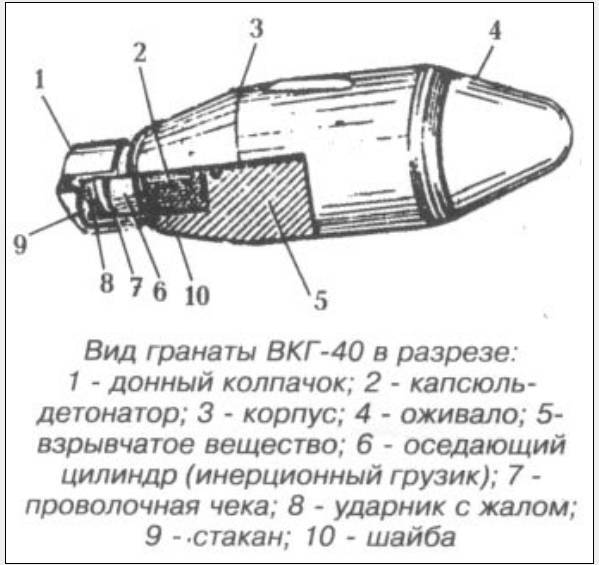
The cumulative rifle grenade is designed to combat lightly armored vehicles and the enemy’s mobile equipment not protected by armor, as well as firing points. Used VKG-40 is very limited, due to the low accuracy of fire and poor armor penetration.
During the war in the USSR, a significant number of hand-held anti-tank grenades were launched. Initially, these were high-explosive grenades, as the thickness of the armor increased and the weight of anti-tank grenades increased. However, this still did not ensure penetration of the armor of medium tanks, so an RPG-41 grenade with a weight of 1400 g explosive could penetrate 25-mm armor.
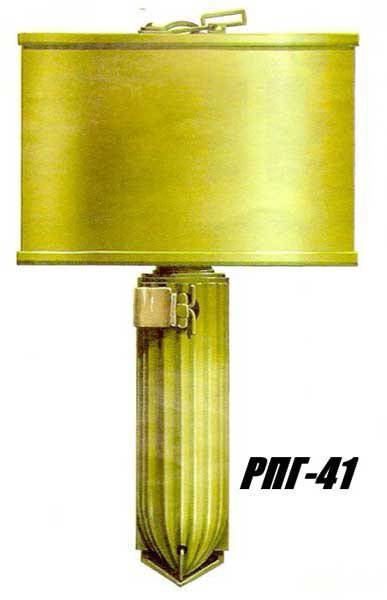
Needless to say, the danger posed this anti-vehicle for the one who used it.
In the middle of 1943, a fundamentally new grenade of cumulative action RPG-43, developed by N.P. Belyakov. It was the first cumulative hand grenade developed in the USSR.
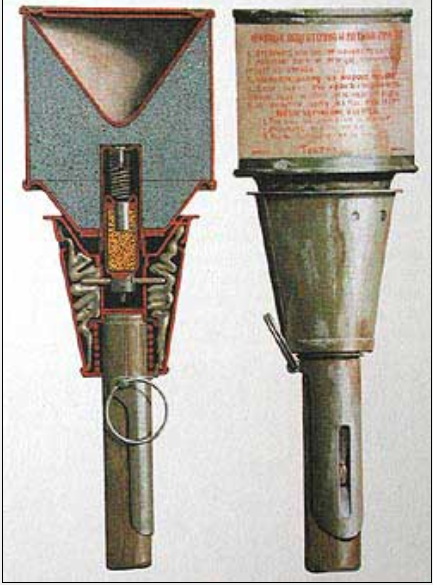
The RPG-43 had a body with a flat bottom and a conical lid, a wooden handle with a safety mechanism, a ribbon stabilizer and a shock-igniting mechanism with a fuse. Inside the case there is a bursting charge with a cumulative notch of conical shape, lined with a thin layer of metal, and a cup with a safety spring fixed in its bottom and a sting.
At its front end of the handle there is a metal sleeve inside which the holder is located and the pin holding it in the rearmost position. Outside, a spring is put on the sleeve and fabric tapes are fastened to the stabilizer cap. The safety mechanism consists of a flap and checks. A folding bar serves to hold the stabilizer cap on the grenade handle until it is thrown, not allowing it to crawl or turn in place.
During the throw of the grenade, the flap is separated and releases the stabilizer cap, which, under the action of a spring, slides off the handle and pulls the tapes behind it. The safety stud falls out under its own weight, freeing the holder of the fuse. Due to the presence of the stabilizer, the flight of the grenade took place head-first, which is necessary for the optimal use of the energy of the cumulative charge of the grenade. When a grenade strikes a barrier with a bottom of the body, the igniter, overcoming the resistance of the safety spring, imposes a sting detonator on the sting, which causes a bursting charge to explode. The cumulative RPG-43 charge punched armor with a thickness of up to 75 mm.
With the advent of German heavy tanks on the battlefield, a hand-held anti-tank grenade was needed with greater armor penetration. A group of designers consisting of M.Z. Polevanova, L.B. Ioffe and N.S. Zhitkikh has developed a cumulative RPG-6 grenade. In October, 1943, the grenade was adopted by the Red Army. Grenade RPG-6 is in many ways similar to the German PWM-1.
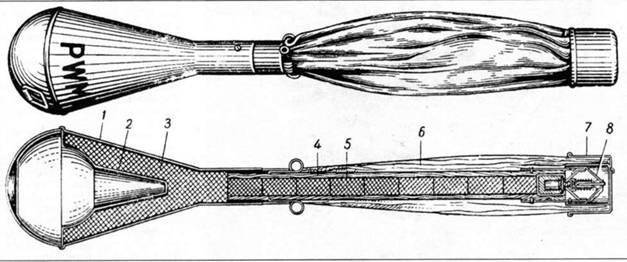
The RPG-6 had a drop-shaped body with a charge and an additional detonator and a handle with an inertial fuse, a primer-detonator and a ribbon stabilizer.
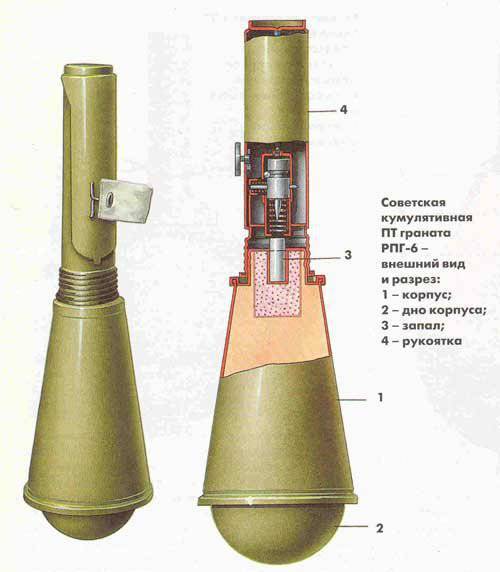
Drummer fuse blocked check. The tapes of the stabilizer were laid in the handle and held by the safety bar. The safety pin was removed before the throw. After the throw, the safety bar flew off, the stabilizer was pulled out, the drummer's check was pulled out - the fuse was set.
Thus, the protection system RPG-6 was a three-stage (the RPG-43 - two-stage). In terms of technology, a significant feature of the 6 RLG was the absence of chiseled and threaded parts, the extensive use of stamping and knurling. Compared with the RPG-43, the RPG-6 was more technological in production and somewhat safer to handle. RPG-43 and RPG-6 on 15-20 were rushing in m, after the throw the fighter should have taken refuge.
During the war years in the USSR, anti-tank grenade launchers were never created, although work was being done in this direction. The main anti-tank infantry weapons were still PTR and hand-held anti-tank grenades. In part, this was offset by a significant increase in the number of anti-tank artillery in the second half of the war. But in the offensive anti-tank guns could not always accompany the infantry, and in the event of the appearance of enemy tanks, this often led to large and unjustified losses.
Based on:
http://operation-barbarossa.narod.ru/artelleria/76-mm-m1927.htm
http://weapon.at.ua/load/261-1-0-540
http://ser-sarajkin.narod2.ru/ALL_OUT/AiKOut13/RBSK-82/RBSK-82002.htm
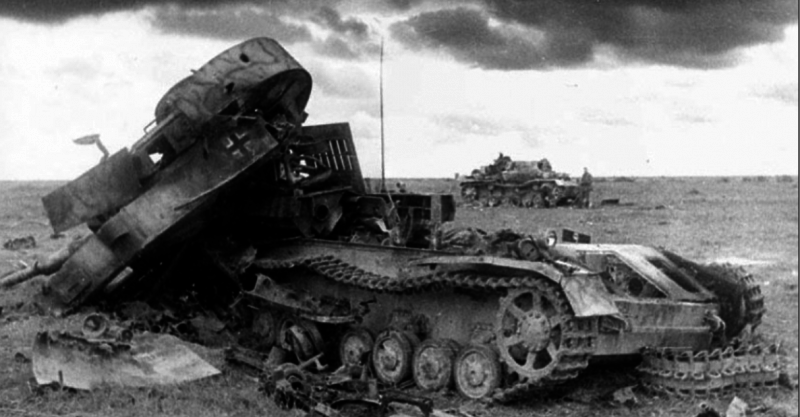

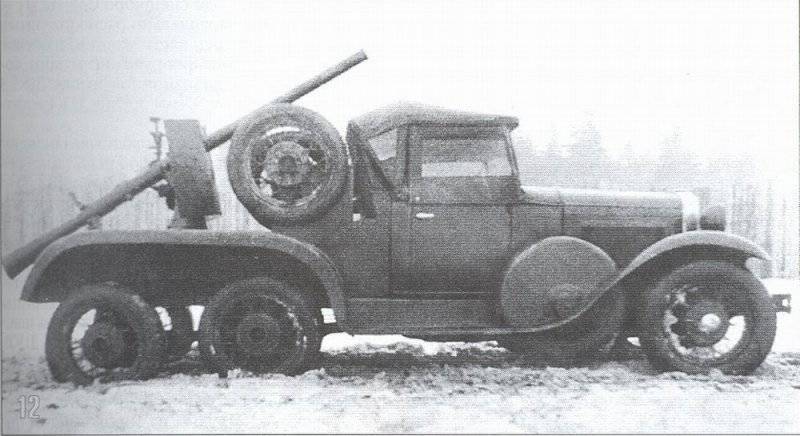
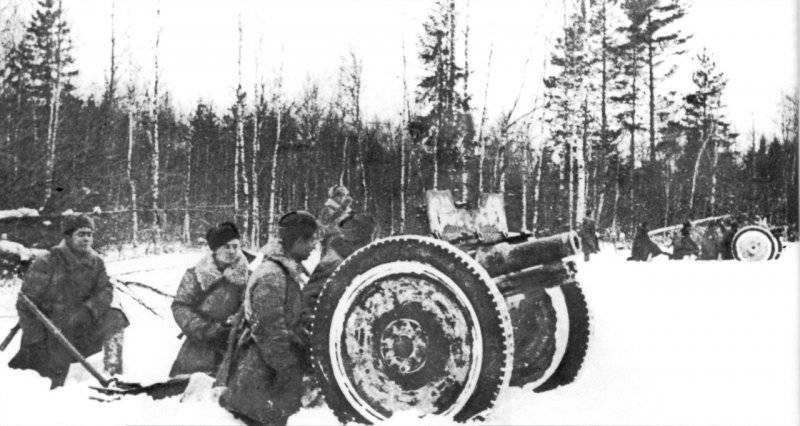
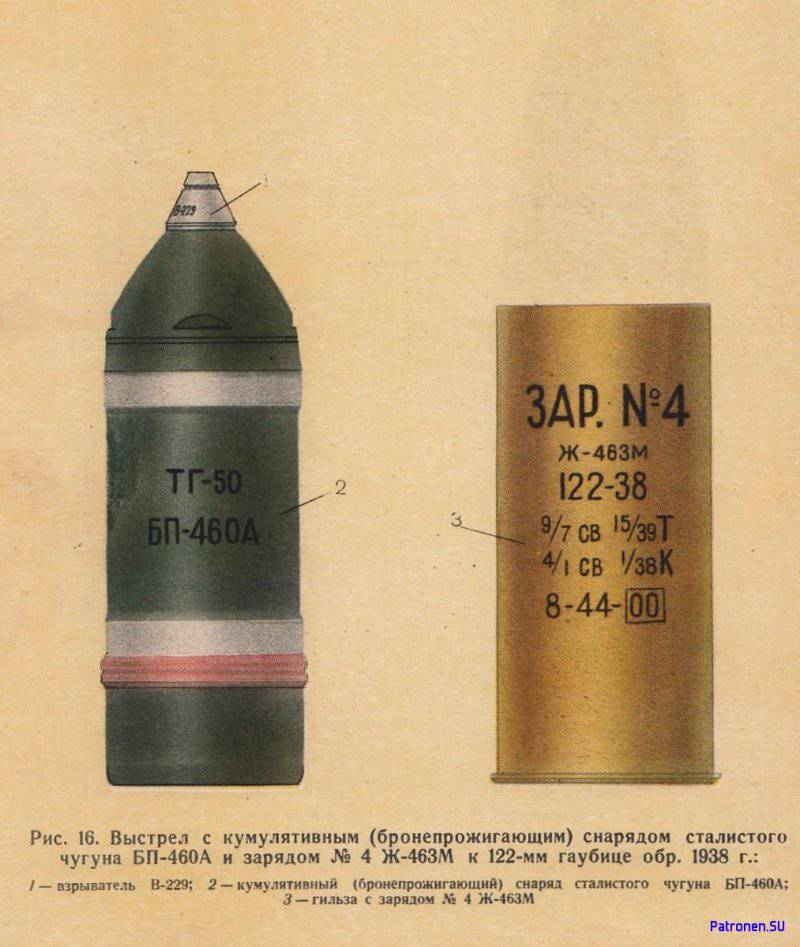
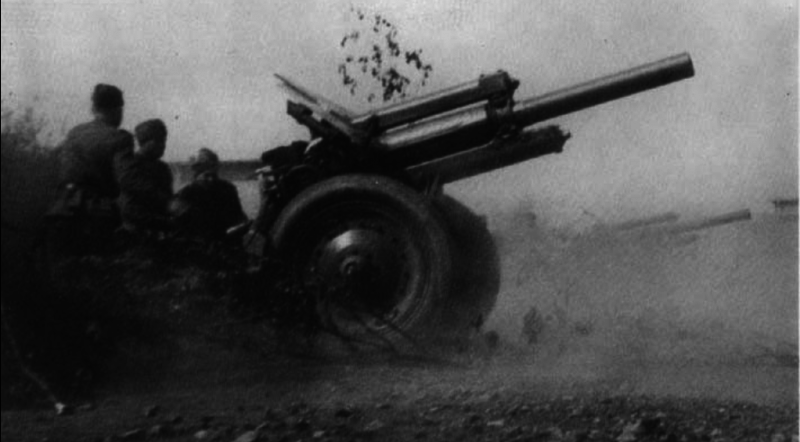
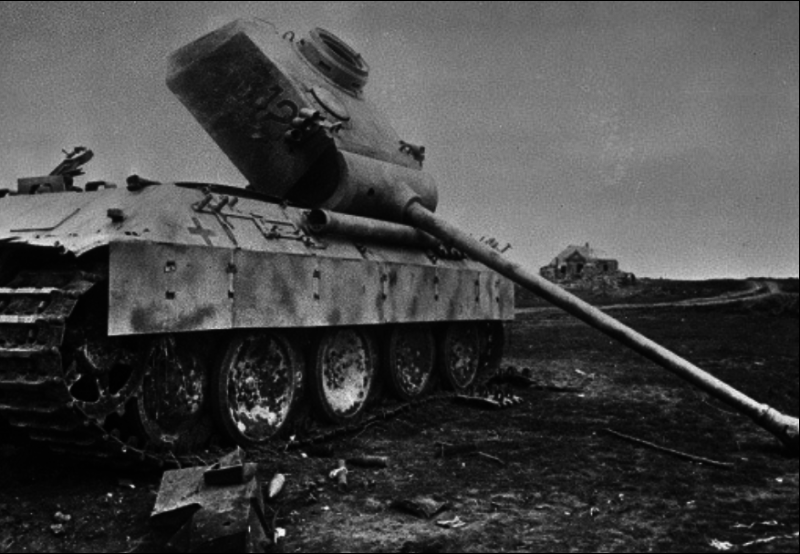
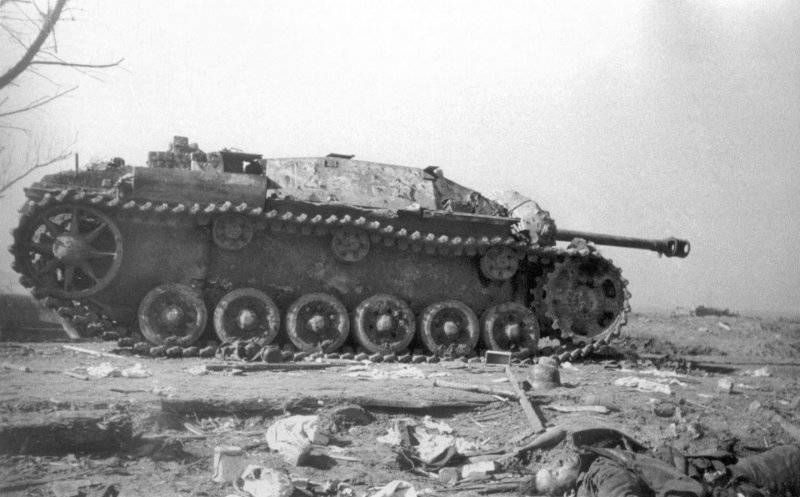
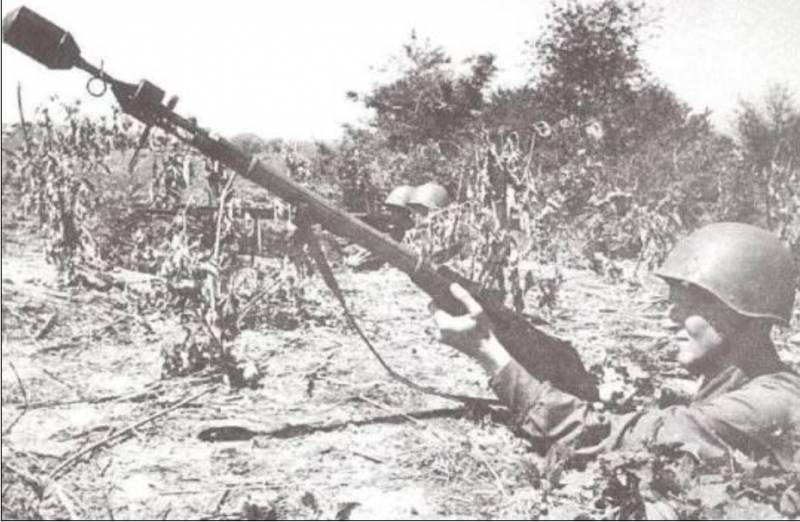
Information